Related Research Articles
Non-rapid eye movement sleep (NREM), also known as quiescent sleep, is, collectively, sleep stages 1–3, previously known as stages 1–4. Rapid eye movement sleep (REM) is not included. There are distinct electroencephalographic and other characteristics seen in each stage. Unlike REM sleep, there is usually little or no eye movement during these stages. Dreaming occurs during both sleep states, and muscles are not paralyzed as in REM sleep. People who do not go through the sleeping stages properly get stuck in NREM sleep, and because muscles are not paralyzed a person may be able to sleepwalk. According to studies, the mental activity that takes place during NREM sleep is believed to be thought-like, whereas REM sleep includes hallucinatory and bizarre content. NREM sleep is characteristic of dreamer-initiated friendliness, compared to REM sleep where it is more aggressive, implying that NREM is in charge of simulating friendly interactions. The mental activity that occurs in NREM and REM sleep is a result of two different mind generators, which also explains the difference in mental activity. In addition, there is a parasympathetic dominance during NREM. The reported differences between the REM and NREM activity are believed to arise from differences in the memory stages that occur during the two types of sleep.
Ronald Mark Evans is an American Biologist, Professor and Head of the Salk’s Gene Expression Laboratory, and the March of Dimes Chair in Molecular and Developmental Biology at the Salk Institute for Biological Studies in La Jolla, California and a Howard Hughes Medical Institute Investigator. Dr. Ronald M. Evans is known for his original discoveries of nuclear hormone receptors (NR), a special class of transcriptional factor, and the elucidation of their universal mechanism of action, a process that governs how lipophilic hormones and drugs regulate virtually every developmental and metabolic pathway in animals and humans. Nowadays, NRs are among the most widely investigated group of pharmaceutical targets in the world, already yielding benefits in drug discovery for cancer, muscular dystrophies, osteoporosis, type II diabetes, obesity, and cardiovascular diseases. His current research focuses on the function of nuclear hormone signaling and their function in metabolism and cancer.
The cyclic alternating pattern is a pattern of two long-lasting alternate electroencephalogram (EEG) patterns that occur in sleep. It is a pattern of spontaneous cortical activity which is ongoing and occurs in the absence of sensory stimulation. It is the reorganization of the sleeping brain challenged by the modification of environmental conditions and it is characterized by periodic abnormal electrocortical activity that recurs with a frequency of up to one minute. It is considered "the EEG marker of unstable sleep". CAP does not occur during rapid eye movement sleep (REM). In Lennox-Gastaut syndrome, CAP modulates the occurrence of clinical seizures and generalized epileptic discharges by means of a gate-control mechanism.
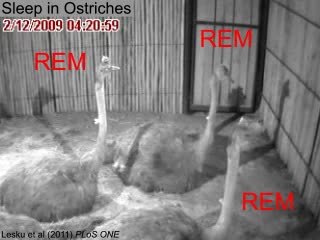
Slow-wave sleep (SWS), often referred to as deep sleep, is the third stage of non-rapid eye movement sleep (NREM), where electroencephalography activity is characterised by slow delta waves.
The American Academy of Sleep Medicine (AASM) is a United States professional society for the medical subspecialty of sleep medicine which includes disorders of circadian rhythms. It was established in 1975.

The UCLA School of Medicine is the accredited medical school of the University of California, Los Angeles. Founded in 1951, it is the second medical school in the University of California system after the UCSF School of Medicine. The school was renamed in 2001 in honor of media mogul David Geffen who donated $200 million in unrestricted funds.
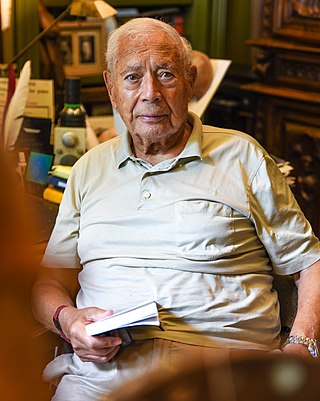
Michel Valentin Marcel Jouvet was a French neuroscientist and medical researcher.

Louis Joseph Ignarro is an American pharmacologist. For demonstrating the signaling properties of nitric oxide, he was co-recipient of the 1998 Nobel Prize in Physiology or Medicine with Robert F. Furchgott and Ferid Murad.
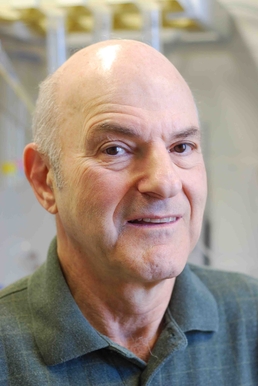
George K. Aghajanian was an American psychiatrist who was Emeritus Foundations Fund Professor at the Yale School of Medicine, New Haven, Connecticut, in the Department of Psychiatry. He was a pioneer in the area of neuropharmacology. He also served as a member of the NARSAD Scientific Advisory Board.
The International Classification of Sleep Disorders (ICSD) is "a primary diagnostic, epidemiological and coding resource for clinicians and researchers in the field of sleep and sleep medicine". The ICSD was produced by the American Academy of Sleep Medicine (AASM) in association with the European Sleep Research Society, the Japanese Society of Sleep Research, and the Latin American Sleep Society. The classification was developed as a revision and update of the Diagnostic Classification of Sleep and Arousal Disorders (DCSAD) that was produced by both the Association of Sleep Disorders Centers (ASDC) and the Association for the Psychophysiological Study of Sleep and was published in the journal Sleep in 1979. A second edition, called ICSD-2, was published by the AASM in 2005. The third edition, ICSD-3, was released by the AASM in 2014. A text revision of the third edition (ICSD-3-TR) was published in 2023 by the AASM.
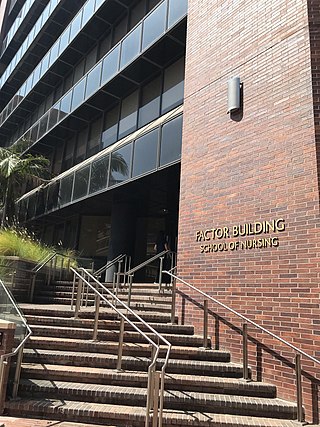
The UCLA School of Nursing is a nursing school affiliated with UCLA, and is located in the Westwood neighborhood of Los Angeles, California. The school is housed in the Doris and Louis Factor Health Sciences Building, known as the Factor Building, on the south end of UCLA's 400-plus-acre campus, adjacent to the Ronald Reagan UCLA Medical Center.
Allan Rechtschaffen was a noted pioneer in the field of sleep research whose work includes some of the first laboratory studies of insomnia, narcolepsy, sleep apnea, and napping. He received his PhD from Northwestern University in 1956.

Miodrag (Misha) Radulovacki, was a Serbian American scientist and inventor. He was Professor of Pharmacology in the College of Medicine at the University of Illinois at Chicago (UIC), Radulovacki's research accomplishments include: (1) the Adenosine Sleep Theory, and (2) pioneering pharmacological studies for the treatment of sleep apnea, together with research collaborator, David W. Carley,. Radulovacki and Carley invented several drug therapies for the treatment of sleep apnea which have been patented by the UIC. The UIC recognized them as the 2010 "Inventors of the Year." Radulovacki published more than 170 scientific papers. Radulovacki was also a Foreign Member of the Serbian Academy of Sciences and Arts.
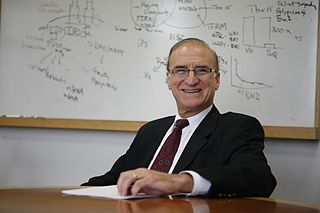
Carl Ronald Kahn is an American physician and scientist, best known for his work with insulin receptors and insulin resistance in diabetes and obesity. He is the Chief Academic Officer at Joslin Diabetes Center, the Mary K. Iacocca Professor of Medicine at Harvard Medical School and a member of the National Academy of Sciences since 1999.
Paul Thompson is a British-American neuroscientist, and a professor of neurology at the Imaging Genetics Center at the University of Southern California. Thompson obtained a bachelor's degree in Greek and Latin languages and mathematics from Oxford University. He also earned a master's degree in mathematics from Oxford and a PhD degree in neuroscience from University of California, Los Angeles.
Phyllis C. Zee is the Benjamin and Virginia T. Boshes Professor in Neurology, the director of the Center for Circadian and Sleep Medicine (CCSM) and the chief of the Division of Sleep Medicine (neurology) at the Feinberg School of Medicine, Northwestern University, Chicago. She is also the medical director of Sleep Disorders Center at Northwestern Memorial Hospital.
Adriana Galván is an American psychologist and expert on adolescent brain development. She is a professor of psychology at the University of California, Los Angeles (UCLA) where she directs the Developmental Neuroscience laboratory. She was appointed the Jeffrey Wenzel Term Chair in Behavioral Neuroscience and the Dean of Undergraduate Education at UCLA.
Gina R. Poe is an American neuroscientist specializing in the study of sleep and its effect on memory and learning. Her findings have shown that the absence of noradrenaline and low levels of serotonin during sleep spindles allow the brain to form new memories during REM, as well as restructure old memory circuits to allow for more learning during later waking periods. She currently works as a professor at the University of California, Los Angeles (UCLA).
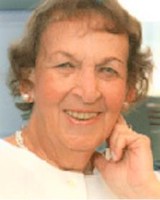
Rosalind Dymond Cartwright (1922–2021) was a neuroscientist and professor emerita in the Department of Psychology and in the Neuroscience Division of the Graduate College of Rush University. She was known to her peers as "Queen of Dreams". In 2004 she was named Distinguished Scientist of the Year by the Sleep Research Society.

Michael L. Perlis is an American clinical research scientist in insomnia and behavioral sleep medicine. He is Director of the Behavioral Sleep Medicine Program at the University of Pennsylvania, where he is also an associate professor of Psychiatry and Nursing.
References
- ↑ Roy, Sree (2017-01-25). "SRS to Partner with Oxford University Press to Publish SLEEP". Sleep Review. Retrieved 2023-07-09.
- ↑ AASM Young Investigators Research Forum (2020 Virtual Meeting). AASM Foundation. 2020. p. 16.
- ↑ "IK6BX004208-01 - BLR&D Research Career Scientist Award". www.research.va.gov. 2021-09-15. Retrieved 2023-07-11.
- ↑ "IK6BX004208-01 - BLR&D Research Career Scientist Award". www.research.va.gov. 2022-11-07. Retrieved 2023-07-11.
- ↑ "IK6BX004208-01 - BLR&D Research Career Scientist Award". www.research.va.gov. 2022-11-07. Retrieved 2023-07-11.
- ↑ "12F-RCS-010 - Research Career Scientist Award". www.research.va.gov. 2021-07-26. Retrieved 2023-07-11.
- ↑ "IK6BX004208-01 - BLR&D Research Career Scientist Award". www.research.va.gov. 2023-04-27. Retrieved 2023-07-11.
- ↑ Avidan, Alon Y.; Barkoukis, Teri J. (2011-08-26). Review of Sleep Medicine. Elsevier Health Sciences. ISBN 978-1-4557-0319-7.
- ↑ Szymusiak, Ronald; Alam, Noor; Steininger, Teresa L; McGinty, Dennis (1998-08-24). "Sleep–waking discharge patterns of ventrolateral preoptic/anterior hypothalamic neurons in rats". Brain Research. 803 (1): 178–188. doi:10.1016/S0006-8993(98)00631-3. ISSN 0006-8993. PMID 9729371.